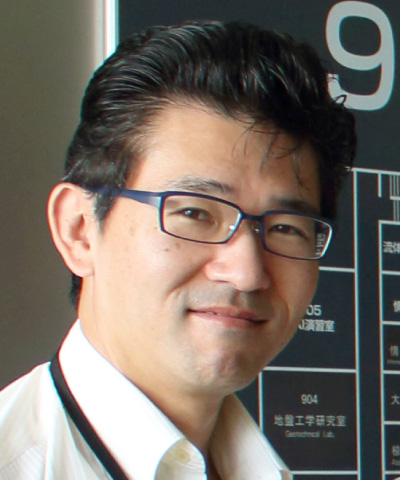About us
GREETING
Researchers and Students around the world through the X-Earth Center.
Towards sharing research and new technologies in the field of X-ray CT, Chapter 2 starts
X-ray computed tomography (CT) has been widely used as a diagnostic technique in medicine. Until now, this technology has gained interest in engineering as an applied method of non-destructive testing. In particular, in the geological field, it has been proven to be very useful even when the materials inside the ground are composed of various geological materials such as soil, rock, and concrete.
In 1997, an industrial X-ray CT scanner was installed in Kumamoto university, and since then, researchers in geotechnical engineering and rock engineering at our university have been leading a series of study groups on X-ray CT in Japan. In this study group, we have been discussing how the X-ray CT method can be applied to geotechnical fields and how it can solve engineering problems. We have also developed our own equipments that can be used in the X-ray CT room for deformation and fracture phenomena of geomaterial materials, and have published papers on our strengths in evaluating phenomena through experiments (evaluating boundary value problems) from use as quality evaluation of materials. In the review of published papers, we have found that the CT scanners are used not only in geotechnical and rock engineering but also in other fields such as soil science and concrete engineering. Taking advantage of this change in the environment, our group began to visit any researchers who used CT near the international conference venue and gradually developed a network of human resources. On November 6-7, 2003, the International Workshop on X-ray CT Methods in Geomaterials (GeoX2003) was held here in Kumamoto, Japan. This was the first meeting in the world to discuss the application of X-ray CT method to geomaterials. Since then, CT workshop was followed by meetings in Aussois, France in 2006, New Orleans, USA in 2009, Ghent Belgium in 2013, Quebec, Canada in 2015, and Cairns, Australia in 2019.
Meanwhile, we named our research group the GeoX Center since 2006. In 2008, the scope of CT applications was expanded from the geo-environment to include the aquatic environment and materials engineering, and the name was changed from GeoX Center to X-Earth Center (X-ray CT on Eco, Aqua and Resource Technology). In addition, with the introduction of a microfocus X-ray CT scanner in 2010, our X-ray CT activities have become more interdisciplinary. Our activities have been enriched both nationally and internationally with the addition of archaeologists and paleontologists as members. The X-Earth Center was selected as a Core Project B in 2010 in Kumamoto University, and we have been able to further our research achievements and activities. In 2016, the X-Earth Center completed its activities as a Core Formation Research B, and has since been working within the newly established International Research Organization for Advanced Scienced and Technology (IROAST) so far.
In 2020, the X-Earth Center will be equipped with two new X-ray CT scanners, one of which is a high-power, high-resolution micro-focused X-ray CT scanner, and the other is a nano-focused X-ray CT scanner, which started operation in April 2021. The newly introduced micro-focused X-ray CT scanner is an excellent device that can irradiate more powerful X-rays than the current device. Also the new micro-focused X-ray CT has an environment that allows various mechanical experiments to be performed in the CT imaging room.Then, the nano-focused X-ray CT scanner is a device that can also be called a 3D X-ray microscope with nano-scale resolution. By using these CT systems according to our objectives, we are now able to further expand our research that was not possible before. Kumamoto University is a rare university institution in Japan and abroad that has this kind of environment.
The results of our research using the newly introduced CT are just beginning. The CT scanner is a tool to visualize the inside of materials using X-rays, and it can be used in several fields. This is also the appeal of the X-Earth Center. It is said that “innovation begins with the fusion of different disciplines”, and I believe that the X-Earth Center can be a place for the fusion of different disciplines and create the soil for innovation.
I have confidence in that the X-Earth Center can be a place for the fusion of different disciplines and create a ground for innovation. If you are interested in the X-Earth Center, you are most welcome.
The head of X-Earth Center
Toshifumi Mukunoki
2021/4/1



